How to force Windows 10 updates to install using the command line
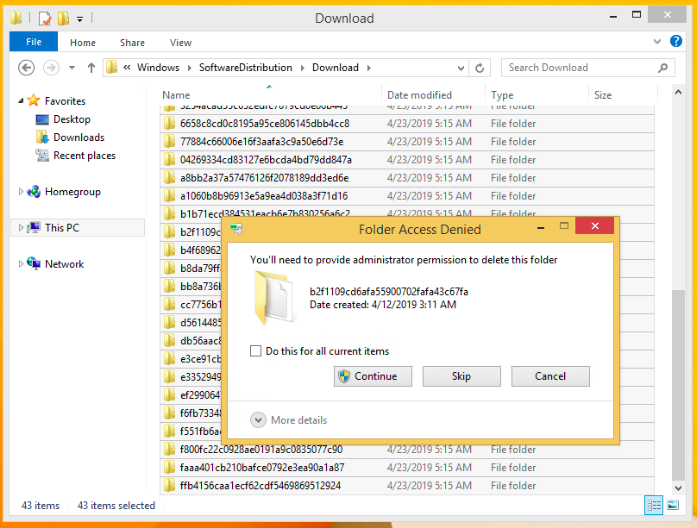
The Windows 10 updates are a problem for many people since you either have to wait for Microsoft to give you the go on updating your system or are forced to update when you’re in the middle of a project.
However, if you want to take the matter into your own hands, this guide shows you how to force Windows to start downloading the Windows 10 update files without having to wait for Microsoft's approval.
First, open to your Windows installation folder and navigate to the following path: “C:\Windows\SoftwareDistribution\Download” (depending on where you installed your Windows, you may need to adjust the drive letter) and delete all the files there.
1. Open Windows Update window, by hitting the Windows key, type “Windows update” and click on it.
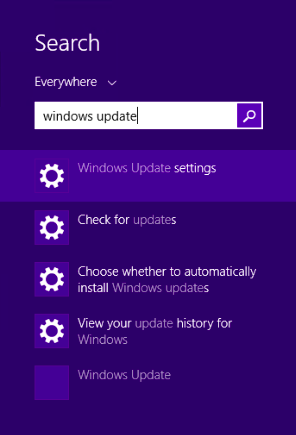
2. Open the command prompt, by hitting the Windows key and type “cmd”. Right click on the Command Prompt icon and choose “Run as administrator”.
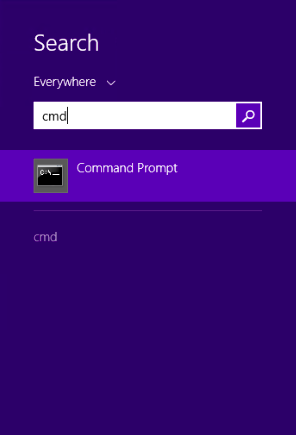
3. In the command prompt type (but, don’t hit enter) “wuauclt.exe /updatenow“ (this is the command to force Windows to check for updates).
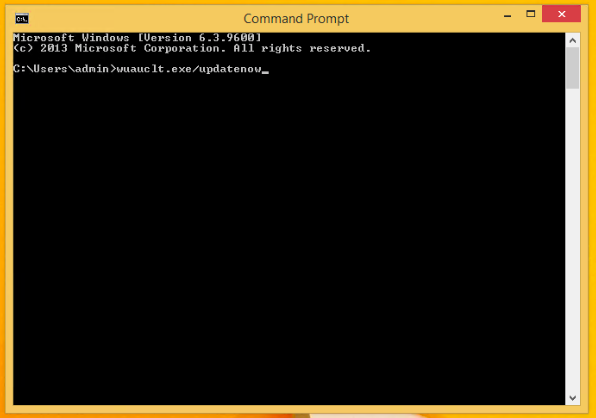
4. Back to Windows Update, click on “Check for updates” - you should see the following message “Checking for updates...”. While this is happening, go back to the command prompt and enter the command you typed at step 3.
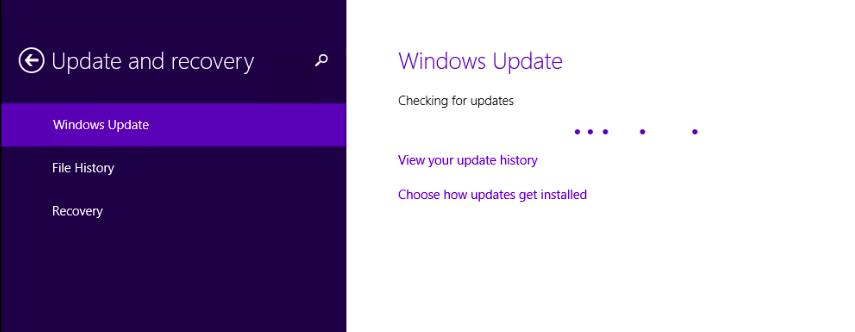
5. Now you should see the Windows update window say that it is downloading Windows 10. Make sure you back everything up before you start installing it.
As an alternative, you could also use WuInstall
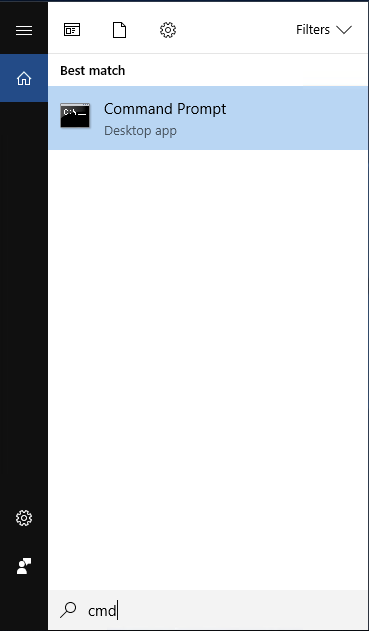
WuInstall is a Windows command line tool that enables IT Administrators to script Windows updates. It makes the entire updating process more controlled and user-friendly by enabling admins to enforce the query, download, and installation of Windows Updates at times when it makes sense.
The possibilities you have with WuInstall are huge, you can use it as a standalone tool or in combination with WSUS or other system management tools, you can manage a small network with 10 machines as well as huge networks with thousands of clients or servers.
1. Download and install WuInstall software
You can get WuInstall from the website http://www.wuinstall.com - there is a free, full functional 30-day trial where you can test whether WuInstall fits your IT infrastructure. After that, you can purchase your WuInstall version either online with a credit card or contact us if you would like to purchase via PO. For details check our FAQ page.
2. Open the command prompt
Open the command prompt, by hitting the Windows key and type “cmd”. Right click on the Command Prompt icon and choose “Run as administrator”.
3. Search for Updates
A simple search is triggered via "wuInstall /search".
This command searches for all Microsoft Updates that are available for install on the current machine (Windows, Office, ...) - in quite the same way you would also see it in the update menu of the Windows OS - and lists them on stdout.
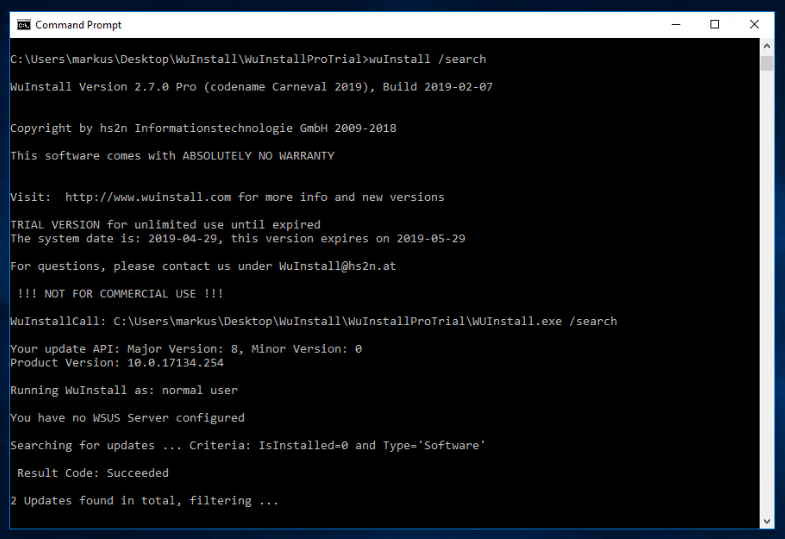
4. Download Updates
A download of updates is triggered via "wuInstall /download".
First, the command does a search and downloads every update of the result list to the local cache of the machine. Those updates are now ready to be installed whenever it’s convenient with the /install option. If /download is triggered on an update that is already downloaded, nothing is done. The /download option can be used to download pending updates at times when bandwidth is available.
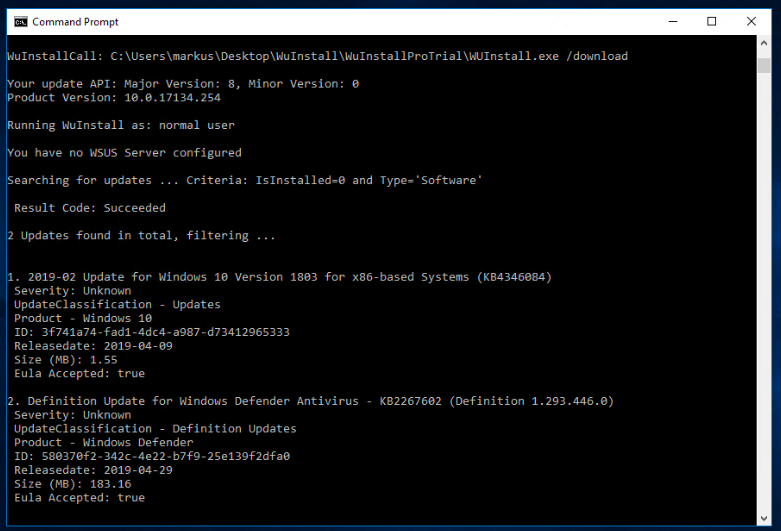
5. Install Updates
To install updates, use the option "wuInstall /install".
It does a search first, then triggers a download for the updates (if they have not been downloaded already) in the result list and then installs the updates on the system. There are a few options like /quiet, /disableprompt or /autoaccepteula in order to suppress user interaction and make installations unattended. Updates can also be installed over reboots using the /rebootcycle option.
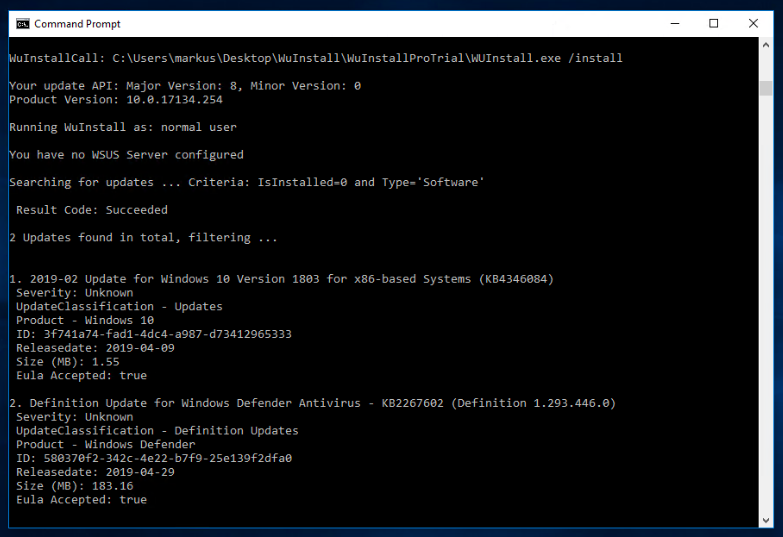
For additional details, please check our documentation.
Do you need more than a command line tool? Check out XEOX!